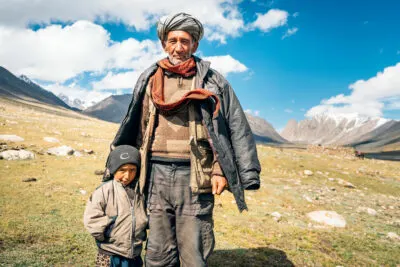
Travel in Afghanistan as a tourist
Badakhshan, Afghanistan
I spent two weeks on a backpacking trip in the remote mountains of Afghanistan. This is not your typical holiday destination, but it is one of my favorite travel experiences so far. Here is a glimpse of the beauty of Afghanistan.
When you think of Afghanistan, what do you think of? Warfare? Terrorism? Osama bin Laden? The Taliban? Poppy fields? Bulka?
Although most parts of Afghanistan are still dangerous — there are also incredible beauty, hospitality and kindness there, which have not been reported.
When you don’t have to look these people in the eye, it’s too easy to slander or obliterate the whole country. They have the same hopes and dreams as you – just to survive, find happiness and support your family.
During my trip as an American tourist in the summer of 2016, I was able to experience the positive side of Afghanistan and its beautiful people closely. It later became my most unforgettable travel adventure so far.
The following are some of my favorite photos of people and scenery during my 100-mile backpacking trip in the Wahan Corridor in the remote mountains of Badakhshan Province, Afghanistan.
Afghanistan’s Wahan Corridor
Badakhshan, Afghanistan
I spent two weeks on a backpacking trip in the remote mountains of Afghanistan. This is not your typical holiday destination, but it is one of my favorite travel experiences so far. Here is a glimpse of the beauty of Afghanistan.
When you think of Afghanistan, what do you think of? Warfare? Terrorism? Osama bin Laden? The Taliban? Poppy fields? Bulka?
Although most parts of Afghanistan are still dangerous — there are also incredible beauty, hospitality and kindness there, which have not been reported.
When you don’t have to look these people in the eye, it’s too easy to slander or obliterate the whole country. They have the same hopes and dreams as you – just to survive, find happiness and support your family.
During my trip as an American tourist in the summer of 2016, I was able to experience the positive side of Afghanistan and its beautiful people closely. It later became my most unforgettable travel adventure so far.
The following are some of my favorite photos of people and scenery during my 100-mile backpacking trip in the Wahan Corridor in the remote mountains of Badakhshan Province, Afghanistan.
Afghanistan’s Wahan Corridor
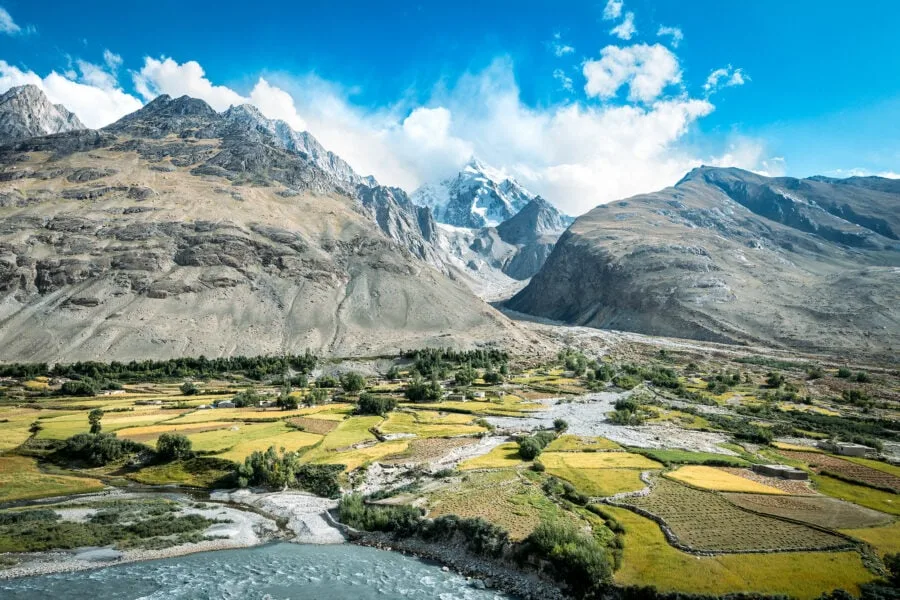
Hindu Kush Mountains

Wahan Corridor
Wahan is a rugged area in the northeast of Afghanistan, which is part of Badakhshan Province. It is a long and narrow land, about 400 kilometers long, surrounded on three sides by Tajikistan, China and Pakistan.
There are two large mountains in the region, the Pamir Mountains in the north and the Hindu Kush Mountains in the south. The Wahan Corridor was created by politicians in the “grand game” of the 19th century, trying to leave a buffer zone between British India and the Russian Empire.
Hiking in remote mountain areas

Take a ride from the yak

Hiking in Afghanistan
In my hiking trip in Afghanistan, we mainly walked, but after meeting a group of Wak people who led their yaks through the mountains, I also managed to catch part of the yak route.
When they stopped to drink tea, they asked us to borrow their yaks, and we continued to walk to the valley with the yaks — until their master later caught up with us.
Yak is the final eco-friendly four-wheel drive vehicle in Afghanistan, which can climb steep rock terrain and pass through cold rivers. There are no trees above 10000 feet, so local people have to take their animals to trek to low-altitude areas for three days to collect firewood for cooking and heating.
Ancient Silk Road in Afghanistan

The ancient Silk Road

Hiking in Wahan
The Wahan region of Afghanistan was once part of the ancient Silk Road, which was an important trade route connecting China and Europe. In addition to silk, horses and other goods, it is also a highway for troops and explorers. Explorers like Marco Polo are said to have passed here in the 13th century.
Through steep mountain roads and desolate plateaus, through yak and donkey caravans loaded with goods, and spending the night with traveling merchants in the stone shed — I feel like I am enjoying the scene of the Silk Road many years ago.
The multifaceted nature of Islam

Muslim shopkeepers in Afghanistan

My compatriots in Wahan
Like many different branches of Christianity, Islam also has many different branches, all of which have their own beliefs and values. Many people living in the Wahan corridor of Afghanistan are Ismail Muslims who believe in moderate Islam. They have 25 million people in the world and despise the Taliban.
Their spiritual leader is Aga Khan, a successful British businessman and imam, who runs the Aga Khan Development Network, a super important charity organization that improves living conditions and opportunities for the poor in Africa and Central Asia.
The unruly blue river
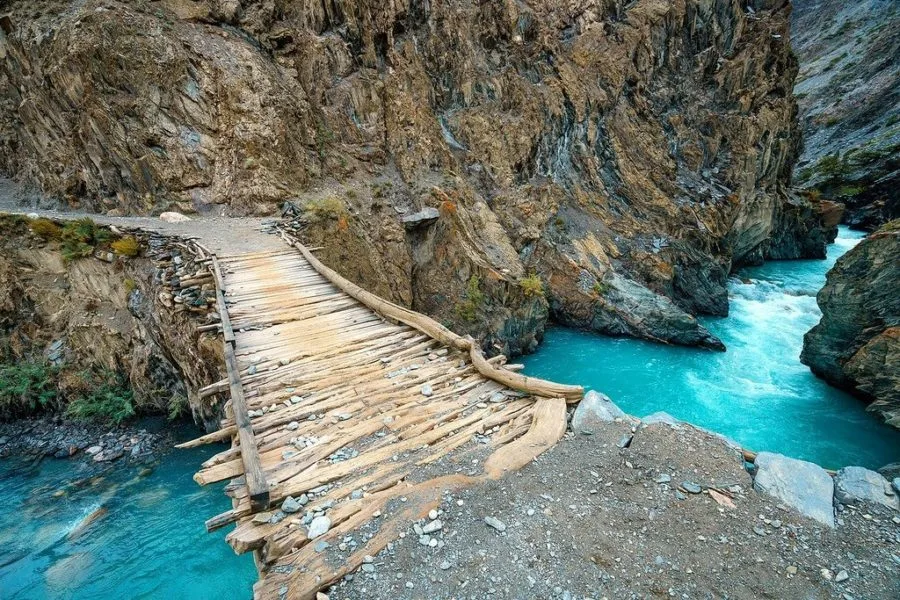
Pedestrian bridge on the Wahan River
The Wahan River flows through the Wahan Corridor and is supplied with water by the Hindu Kush high altitude mountains at the border with Pakistan. It winds through the mountains and is the main lifeline of people living in this harsh and ruthless landscape.
The bright blue color of this water is due to the red color of the surrounding rock strata and the source of crystal clear (glaciers). Water molecules absorb other colors, such as red, more effectively than blue.
Read more: How to choose a backpack
The epic scenery of Afghanistan

Appreciate the wild mountain landscape

New snow in August in the mountains
When the weather is sunny, I can see the incredible mountain scenery like this. This path is badly worn, because every day a small group of local people take the caravan of yak or donkey from one settlement to another.
The altitude of 10-day hiking varies from 10000 to 16000 feet, and our average daily hiking is about 10 miles. At about 12000 feet, I began to feel the impact of altitude on my body, and I felt shortness of breath. At 16000 feet, hiking becomes more tiring and difficult.
roof of the world

A yurt covered with snow

Kyrgyz settlement in Wahan region
The Kyrgyz people in Afghanistan are semi-nomadic people who drive livestock to different pastures according to different seasons and move between valleys. They live in comfortable yurts made of wool felt, which can be disassembled and transported to distant places.
Each settlement consists of 2-3 families who live and work together. They originally came from the surrounding areas of Kyrgyzstan. After the Soviet occupation of Central Asia, their ancestors were somewhat trapped in the Wahan region, forcibly resettled nomadic tribes, and blocked the route of the Silk Road.

Salted yak milk tea
Luzhou-flavor milk tea
Wah and Kyrgyz people drink a lot of salty milk tea, called Sheer Chai. It is eaten as breakfast, lunch and dinner. Basically, it is a mixture of yak and goat milk, boiled for several hours, and then dried into portable lumps. It is made by adding boiling water, pine leaf tea and rock salt.
Salt is very useful for replenishing water in high altitude and dry areas — I call it my Afghan Gatorade. It takes a while to adapt (salty hot milk?), but at the end of the adventure, my body is eager to drink pure tea every meal. You can also add raw butter to tea at breakfast to increase calories.

Ancient Afghan rock paintings
Rock paintings in Afghanistan
At the end of the second day of hiking, we walked through a group of ancient rock paintings, which were carved on a dark boulder overlooking the valley. My local guide Yal can’t tell me much about them, but they think they have thousands of years of history.
They depict hunting scenes, men holding what seems to be bows, and large animals such as goats and rare Marco Polo sheep. This is just one of many rock paintings dotted in these mountains. They are believed to mark the ancient hunting grounds claimed by different tribes.
Afghan schools

Central Asia Academy
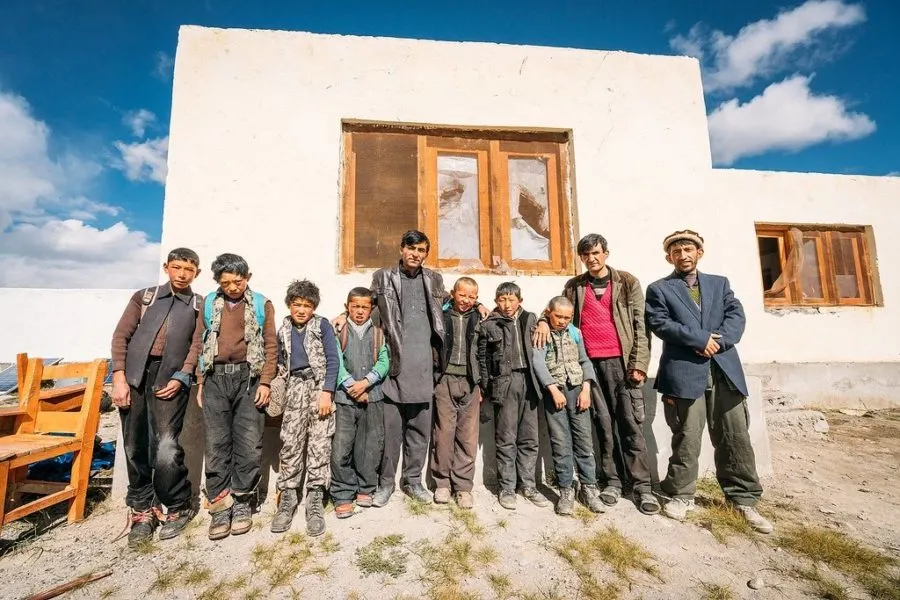
Kyrgyz boys prepare for class
This simple three-room school in the remote village of Bozai Gumbaz in Afghanistan was built by Greg Mortenson and his Central Asian Institute. You may have heard of Greg, the author of the best-selling novel Three Cups of Tea, which tells the story of building a school for girls in Pakistan.
I played cards with the soldiers of the Afghan army there all night. In his second book, “The Stone to the School”, the school in Bozhai Gombaz is very prominent. The next morning, a group of boys came to class on donkeys. I saw many CAI schools on the way from Eshkashim to Salhard Brojir.
Field camping in Afghanistan
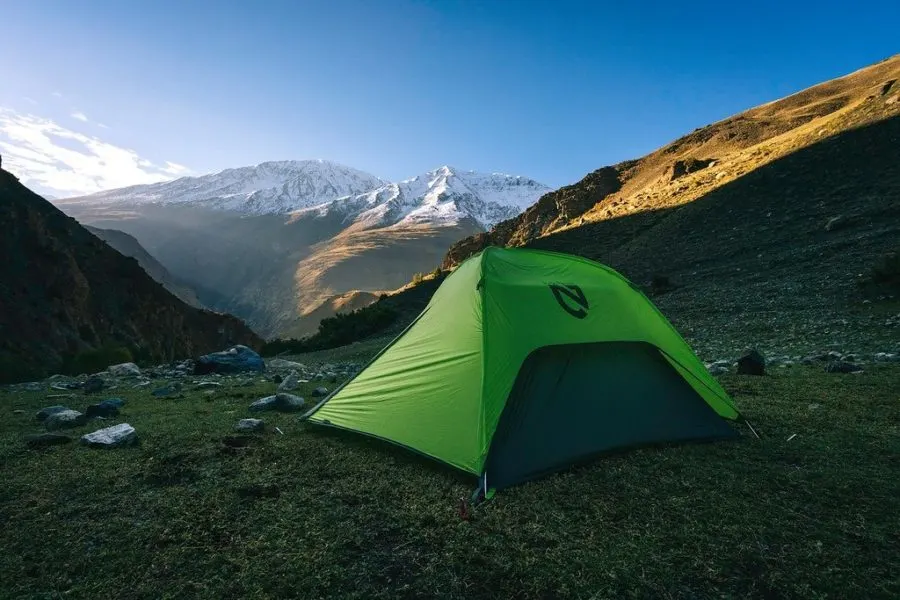
Camping in Afghanistan
As a loyal fan of outdoor sports, one of the highlights of this trip is the opportunity to camp in the mountains of Afghanistan. Most nights, we can live in small settlements of Wah or Kyrgyz people and in basic inns, but we also have a few nights camping in tents.
Normally, I like to camp with a hammock, but because I know that there will be no trees for most of this hiking trip, I brought the super lightweight Nemo Hornet 2P tent. It snowed several times during the journey — in August! This is my favorite.
Hearty greetings

Greetings from the heart

Friendly shopkeeper of Ishkashim
I’m often greeted as-sal ā mu ʿ Alaykum means “peace be with you”. The short version of this sentence is only sal ā m。 Handshaking is very common, and so is putting your hand on your heart, which only means that your greetings are from the heart.
Another important term I use during my trip is tashakor, which means thank you. I always suggest trying to learn the 10 most commonly used words in a local language before traveling. In the Wahan region of Afghanistan, most people speak some Dari (Persian) and local dialects.
Women in Afghanistan

Afghan women in blue robes

Wakhi girl of Sarhad-e Broghil
Many people ask me if I have seen women in Afghanistan. Yes, I saw women on the trip, but most of them were very shy, especially when I took out the camera. In addition, in their culture, talking with strange men is taboo. But taking portraits of men or children is not a problem.
Many women wear full-length blue burqas covering their faces near Sultan Ishkashim, a border town with a large Sunni population. In more rural areas of Wahan, it is not so strict. The women wore colorful long skirts and simple headscarves. I can greet them and see their faces.

Temples and tombs in Afghanistan

Kyrgyz tombs in Bosaigonbaz
Kajabigari family tomb
In the process of exploring the Wahan Corridor, I met some ancient tombs. Near the Afghan military outpost Bozai Gumbaz, there is a group of Kyrgyz honeycomb tombs with strange shapes, as well as evidence of Soviet bombing during the occupation period in 1980 (crater, bomb fragments).
In Langar settlement, we found a pile of goat horns, marking the burial place of a powerful and important person. In Afghanistan, people with money and power are often called “big shots”. It’s a bit like calling someone “boss”. The more animals, land and wives you have, the more “big” and influential you will be.
Some very rugged roads

Driving in Afghanistan
Before I started a 10-day, 100-mile mountain hiking trip, I had to hire a 4 × The van took me to the last village at the end of the road. We passed several military checkpoints along the way and stopped to drink tea and sugar with officials before continuing.
It took me two days to drive. The road is one of the worst I have ever seen. Dust seeped into the car, making us covered with mud. We crossed the river and drove along the steep cliff, and were often blocked by large groups of goats. The car burst six tires during the trip.
Living in Waki settlements

Make lunch in the stone shed
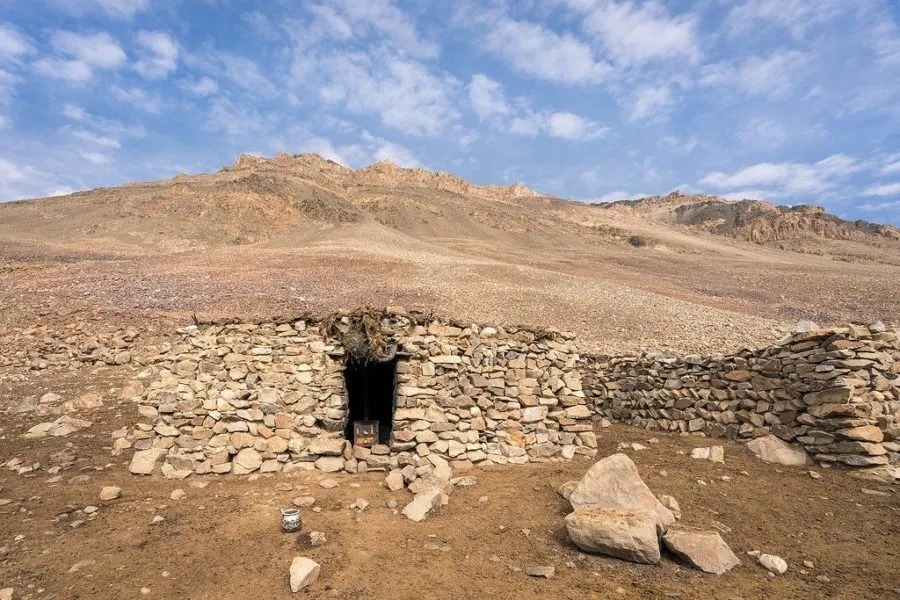
Wakshi settlement
When I entered Afghanistan alone, I decided to hire a local translator/guide and groom to accompany me to the mountains. Without their help, I can hardly communicate with others. During the hiking, we stayed in the Waki settlement for several nights.
The Waji people’s home is basically a stone hut with an earthen kang, made of dung and cement. The roof is composed of logs, grass and more dung to keep its waterproof. Some houses have stoves, while others have only one fire pit. Either way, it is smoky and burning inside. When there is fire
Children in Wahan
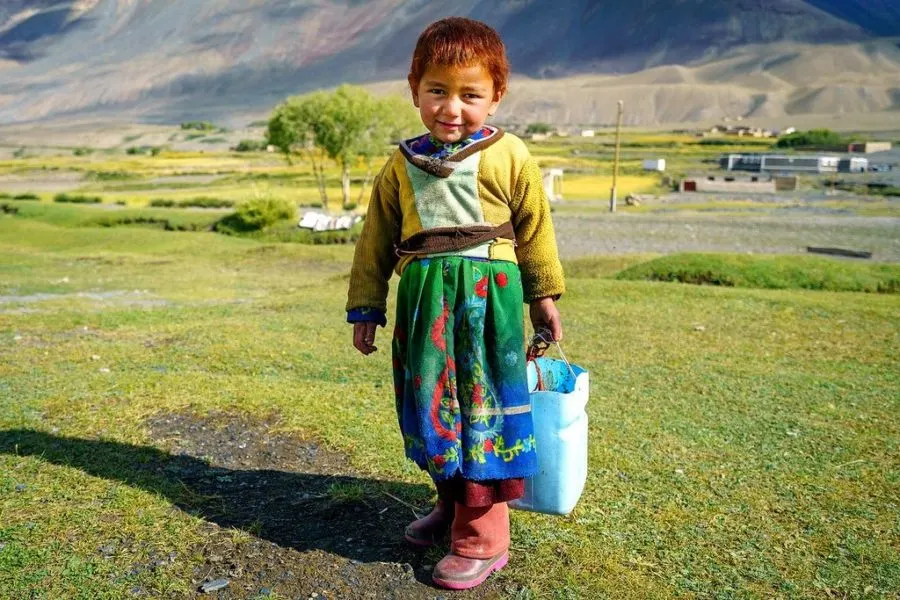
Sahad’s young Afghan girl
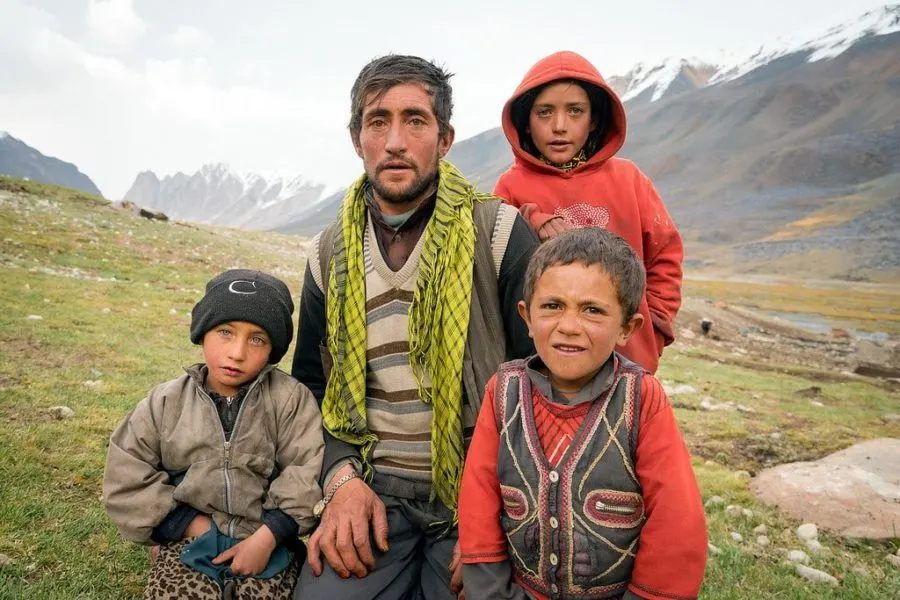
Wah families living in the mountains
Life in Wahan is very difficult, especially for children. About 60% of children die before the age of 5, which is the highest infant mortality rate in the world. If they can survive, they will be arranged to help the family business — herding.
With the help of the Central Asian Institute, there are several schools here, but whether they go to school or not depends on their parents. In some communities, only boys are sent to school. Due to the lack of distance between roads and settlements, it may take several hours to commute by donkey in the morning.
Wildlife in Afghanistan

Central Asian bimodal camel
When I travel in the mountains of Afghanistan’s Wahan Corridor, I really hope to see a snow leopard or Marco Polo sheep. You know, Walter Mitty’s style! Unfortunately, these two endangered animals are extremely difficult to find — but I did find camels! This is the first time I saw a camel.
Fortunately, the Wildlife Conservation Association has staff in the area. They often spend several weeks collecting data in the field to protect the wild animals in the Wahan area. They estimate that there are about 100-200 snow leopards living in these mountains. Wolves and bears also take this wilderness as their home.
A glimpse of another Afghanistan

The country you think you know
So you go there. Take a peek at the other side of Afghanistan that we have never seen in the night news. In the past six years, I have traveled extensively around the world, and I have noticed that this is a common theme.
Don’t let our media, mainly focusing on negative and sensational topics, become the only window for you to understand a foreign dynamic you have never been to.
I’m not going to tell you that Afghanistan is safe. It is not safe. The troops we served there can tell you. Afghans themselves are also well aware of the dangers that plague their country.
But I think there is another side of Afghanistan that deserves attention. Rugged and beautiful mountain landscape. Friendly and hospitable local people.
